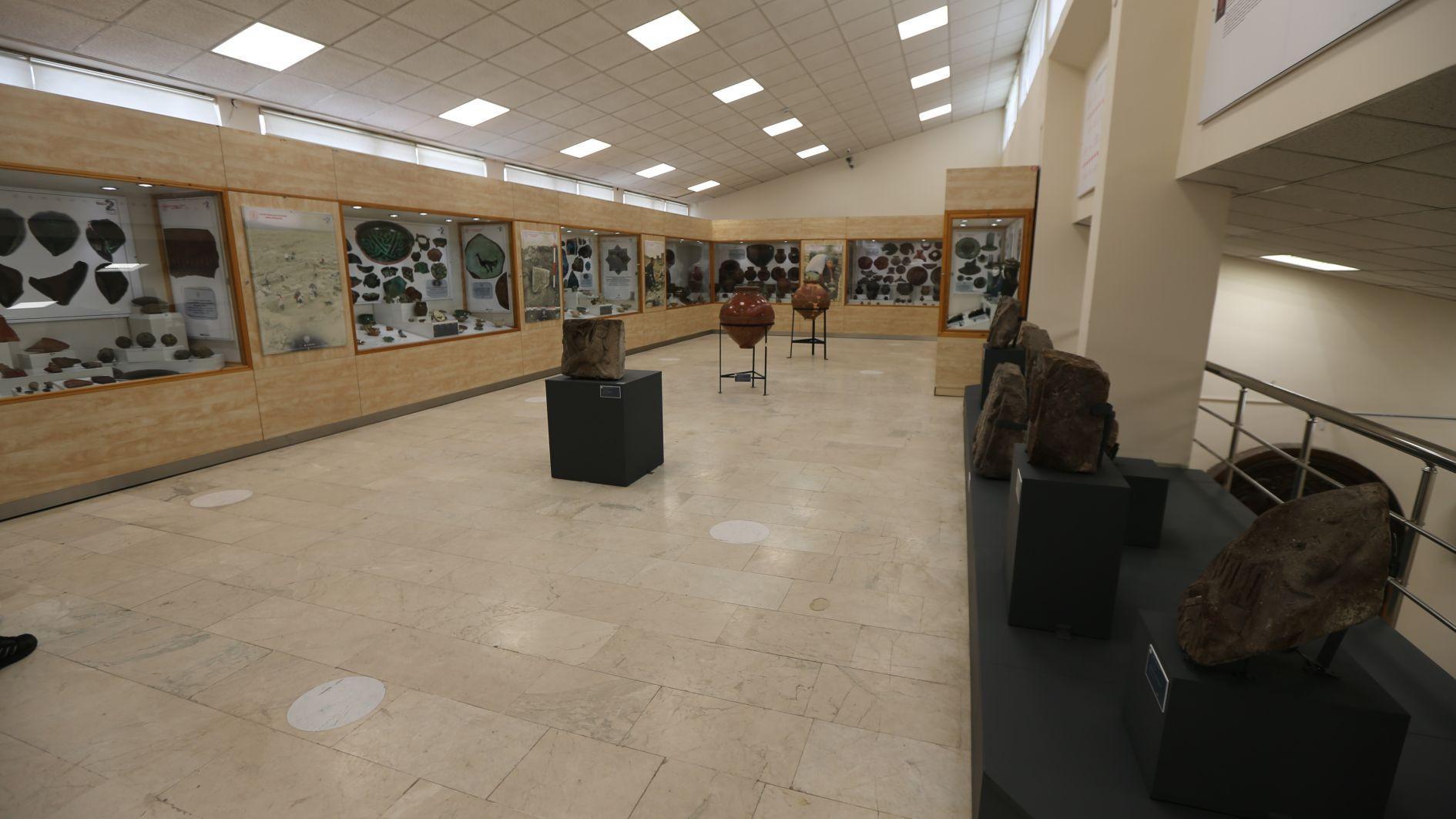
As part of the Culture and Tourism Ministry’s project “102 Exhibitions in the 102nd Year: A Journey Through Anatolia’s Cultural Heritage in the Light of the Republic,” a new exhibition titled “The Story of Ani” opened in Kars.
Organized at the Kars Museum of Archaeology and Ethnography, the exhibition brings together 244 artifacts from the museum’s collection. Among them, 196 are on display for the first time.
Visitors can view gold, silver, bronze, glass, stone and metal objects, such as rings, earrings, necklaces, bracelets, hair ornaments and everyday items, found at the Ani archaeological site, which dates back to 5,000 B.C.
Serkan Gedük of the Directorate General of Cultural Heritage and Museums said that the exhibition presents artifacts uncovered during excavations since 1892 in chronological order.
“Some of these pieces are being shown for the first time,” Gedük said. “One of our main goals with these temporary exhibitions is to bring out works usually kept in museum storage and show them from new angles, with fresh concepts and stories.”
Ani is a 5,000-year-old city
Associate Professor Muhammet Arslan, head of the Ani excavations, emphasized that Ani, a UNESCO World Heritage Site, is especially important for understanding the Turkish-Islamic history of Anatolia.
He stated that archaeological excavations, restoration, conservation and site planning continue at Ani. "As part of both the ministry’s Heritage for the Future project and the current investment program, we launched the 2025 excavation season. This exhibition helps promote Ani, encourages people from all walks of life to visit the site, and offers a chance to showcase many of the artifacts uncovered there. We hope this exhibition helps raise awareness about Ani," he said.
“Ani is a city with a 5,000-year history,” he noted. “It has been inhabited since the Late Chalcolithic period, and the objects on display reflect daily life there from ancient times to the present.”
Hakim Aslan, director of the Kars Museum of Archaeology and Ethnography, said the exhibition includes items discovered during excavations that began in 1892 and continued through 2024.